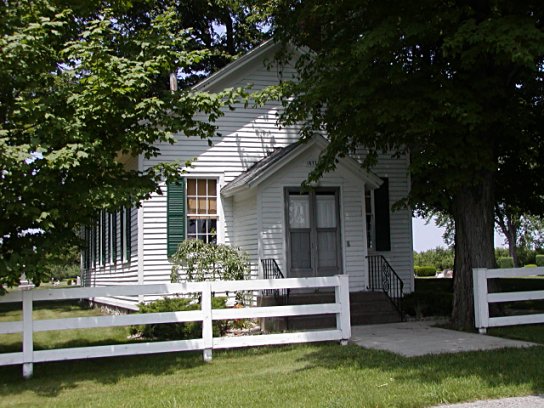

On June 9, 2005 LaPorte County Cemetery
and Research Association extended an invitation to those living in our
community to tour Carmel Cemetery.
A big thank you is extended from us to Bruce Johnson, our tour
guide and the historian for Carmel Cemetery. Much of the following
information was
made possible due to his diligent study of the church and mapping of
its cemetery. Plans are in the works for Bruce to host another tour of
Carmel Cemetery on behalf of the LaPorte County Genealogical Society in
2006.
Following is a very brief synopsis.
For an in depth history on the church and cemetery, please contact
Bruce Johnson at mrjsc@csinet.net
Carmel Church and Cemetery Formation
Many of the Swedish immigrants arrived to the county of La Porte circa
1855 and originally attended
Bethany Lutheran Church in LaPorte city. However, difficulties due to
unimproved roads, mode of transportation and harsh winter weather
encouraged the settlers to try another 'route'. The Swedish settlers of
this faith, living in the New Durham and Coolspring township areas,
decided on April 14, 1872 to build a church within their settlement for
school and Sunday worship services. During this meeting it was
decided that an acre of land would be purchased in the name of "Swedish
Evangelical Lutheran Church of New Durham Township,
La Porte, Indiana." Services were conducted in the Swedish language on
Sunday afternoons, with their minister from
Bethany Lutheran Church administering the gospel.
On August 9, 1874, the settlers called a
meeting for the purpose of establishing a cemetery adjacent to
Carmel Chapel. Twenty lots were plotted and soon sold. On June 5, 1882,
the church received the name of
Swedish Evangelical Lutheran Carmel Chapel.
Around 1915 the cemetery and chapel
became known as simply Carmel and the Swedish language was dropped from
the usage at the Chapel.
The cemetery was opened to all people, regardless of faith. Even with
the improvement of roads and transportation, by 1918 the minister
stopped coming out from La Porte to the chapel. By then, most of the
parishioners had cars and could go to La Porte for services.
The church would only be used for special events thereafter.
In 1946 the Carmel Cemetery Board of
Trustees transferred the property to Bethany Lutheran church with the
stipulation that the association
could elect its own board members at annual meetings.
Carriage House -
This carriage house of the past brought a great deal of fascination for
some of us in the present. It is one of the last remaining carriage
houses in
Northwest Indiana and its upkeep proves the Carmel Association's
determination to preserve Americana at its heart. In pondering the use
of the
carriage house, a local prehistoric archaeologist contacted a historic
archaeologist with 35 years of experience specializing in structures
and their usage.
Note in the pictures below the sliding doors on the front and back of
the carriage house. This allowed the horse, still attached to the
carriage or wagon,
to be walked into the carriage house and through the back door so the
carriage could be stored in the house. Then he would be unharnessed
from the
mode of transportation and lead into his stall (view front of carriage
house picture below) and in nice weather, the window was opened for
ventilation
and the occasional glance out the window for the horse.
The carriage house might also have been
a staging area or temporary pausing area for the coffin of the recently
deceased.
It is told that the ministers of the church used the carriage house for
their own carriages on Sunday. However, in discussing the carriage
house
with the historic archaeologist, he too believes the structure was
intended for more than one purpose; and without knowing the exact
specifics or records,
his initial reaction was that of potential staging area for
multipurpose usage. It is not known at this time if this would have
been included in a final salute
until the departed made his last journey to the grave or church for
final services. Due to the flair of procedures in every day life in the
early 1900's
and late 1800's, it is quite possible to hypothesize one reason would
be to bring the deceased to the carriage house on the hearse/wagon,
and then pall bearers could easily lift up the coffin and either set it
to rest at the final grave site location, or bring it into the church.
More research into past church records and comparative studies of other
carriage houses associated with churches would lend
to a much better understanding for the building's true potential.
Photo album virtual tour
Carmel Church:
Eagle Scout, Mike Young, recently
repainted the carriage house, fence, outhouse and the church for his
Leadership Service Project.
This quaint church still hosts many meetings, reunions and weddings.
Want to see it larger? Just click on the picture and a new window will
open with enlarged photo.
 Front of Church |
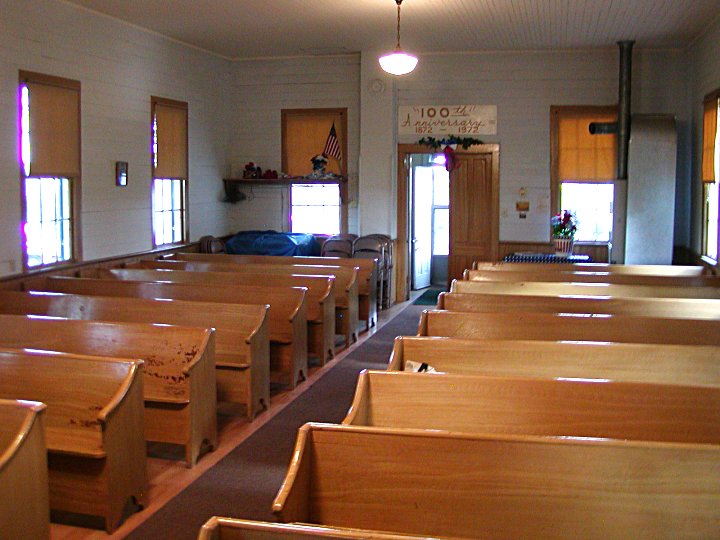 Pews and Vestibule |
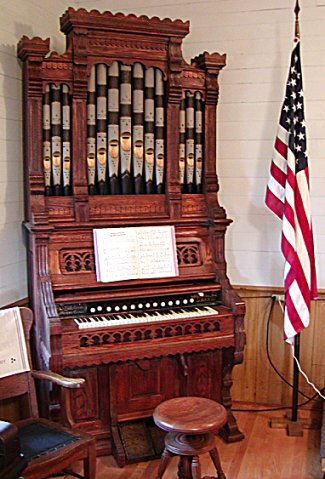 Antique Organ - made by: Hillstrom Organ Company Chesterton |
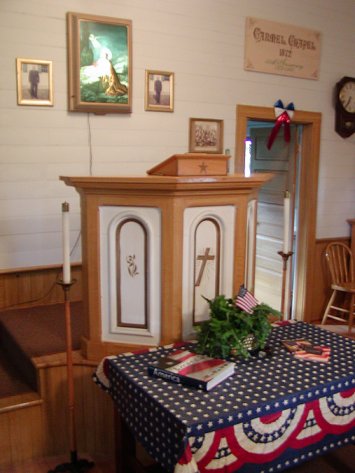 Pulpit & Offering Table |
Minister's Carriage House
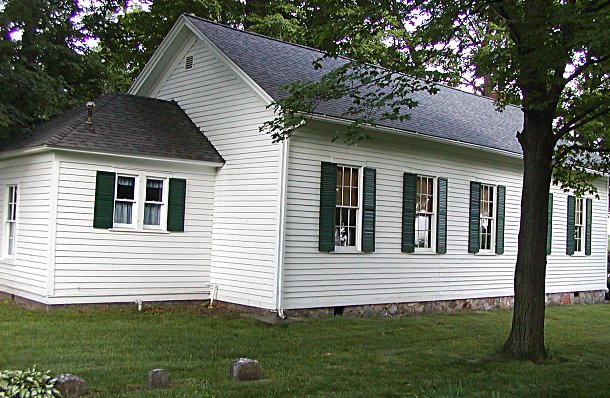 Side & Back |
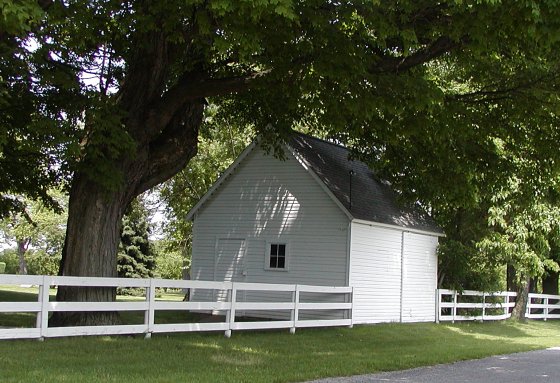 Front of Carriage House |
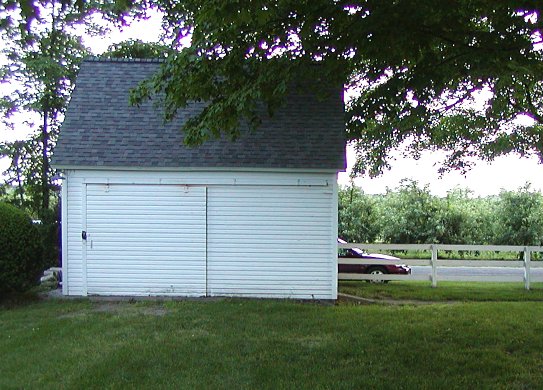 Back of Carriage House |
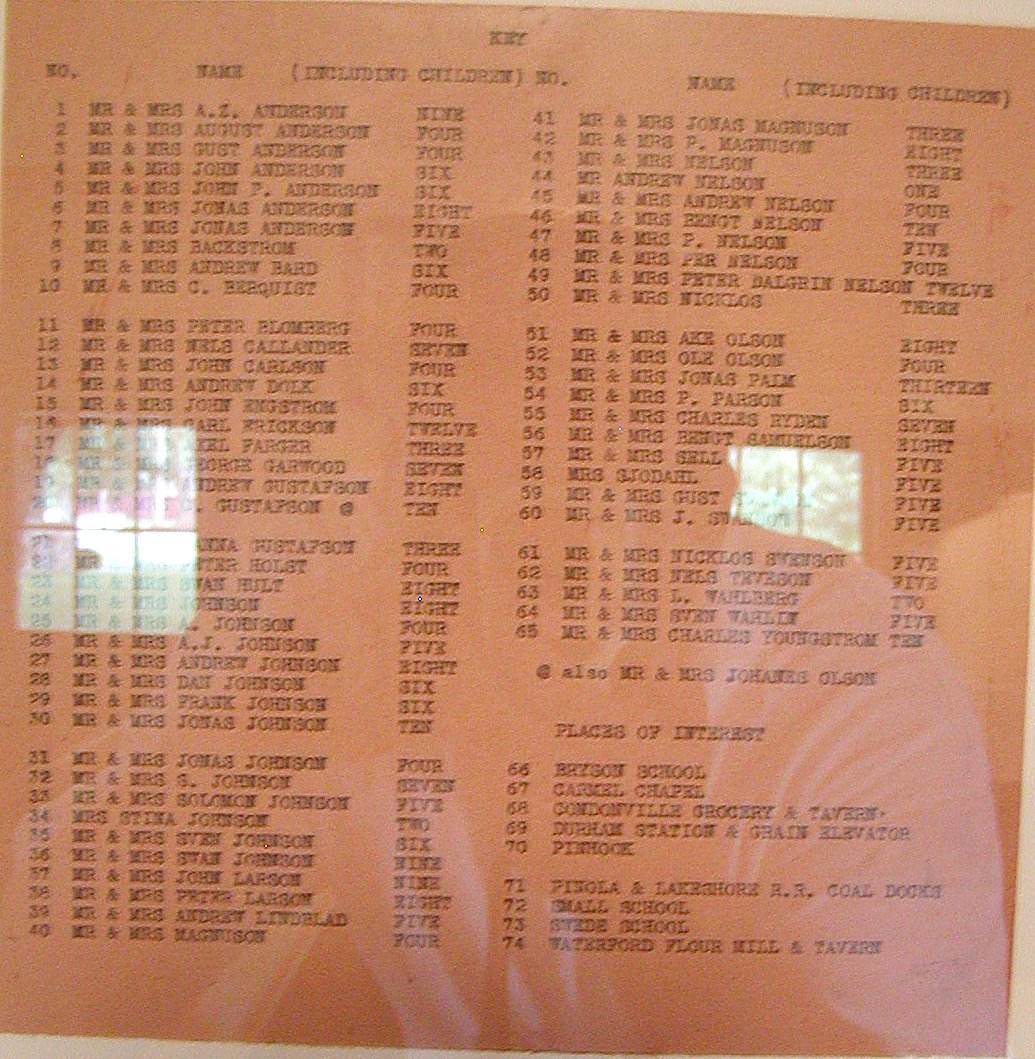 List of Original Families |